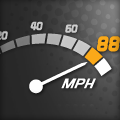88 MPH: Jukebox The Ghost Resurrect The 'Alberti Bass'
posted in: Features • Rock
 Anyone who has seen OurStage artist Jukebox The Ghost perform can attest that the band puts on one hell of a show. Pianist Ben Thornewill rocks back and forth so wildly that he almost falls off his stool. Guitarist Tommy Siegel careens across the stage and drummer Jesse Kristin pounds away on the skins with a huge grin spread across his face. Their sonic output is so full it’s easy to forget they lack a bassist, the traditional fourth member of any rock band. That makes sense because Jukebox The Ghost is no ordinary rock band.
Anyone who has seen OurStage artist Jukebox The Ghost perform can attest that the band puts on one hell of a show. Pianist Ben Thornewill rocks back and forth so wildly that he almost falls off his stool. Guitarist Tommy Siegel careens across the stage and drummer Jesse Kristin pounds away on the skins with a huge grin spread across his face. Their sonic output is so full it’s easy to forget they lack a bassist, the traditional fourth member of any rock band. That makes sense because Jukebox The Ghost is no ordinary rock band.
Combining dance beats, instrumental complexity and pop songwriting, the group stands out as a unique act in the crowded indie rock scene. Their supporting tours with Ben Folds and Barenaked Ladies haven’t hurt their cred either. For the past year, they’ve been riding a wave of positive reviews of their sophomore album Everything Under The Sun and will tour Europe this fall. While it isn’t exactly a homecoming for the Philly-based band, the group’s sound is deeply indebted to the European classical tradition. Specifically, the legacy of one Domenico Alberti.
When people list the most famous classical composers of all time, Alberti generally isn’t up there with Mozart and Beethoven. In fact, the majority of the piano sonatas and operas that he wrote are barely remembered and rarely performed. His one lasting contribution to classical music was the Alberti bass, a left-hand piano pattern that outlines the three notes of a triadic chord. For any three-note chord, the Alberti bass pattern arranges the notes in the order of lowest pitch, highest pitch, middle pitch, highest pitch, as shown in the video above.
Alberti wasn’t the first composer to use the technique, but he used it so often in his compositions that it became directly associated with him. After Alberti’s death in 1740, his signature bass line continued to appear frequently in the work of other composers, most famously in Mozart’s Piano Sonata No. 16 in C Major.
Considering singer-pianist Ben Thornewill’s classical training, it’s not surprising that the Alberti bass makes a major cameo in one of Jukebox The Ghost’s best-known songs. “Under My Skin” opens with the most basic, textbook example of the Alberti bass possible. It sounds like an exercise out of a beginner’s piano book. The riff quickly becomes more complex as Thornewill adds in neighbor tones and harmonies. Continuing prominently throughout the verses and the bridge, the Alberti bass pattern provides the harmonic underpinning for virtually the entire song.
This isn’t an act of showmanship or musical bravado, however. What’s so effective about Jukebox The Ghost’s use of the classical technique is that it truly fits the nervous energy and panicky vocals of the song. If Alberti were to hear Jukebox The Ghost today, we’d like to think that he’d be proud of the enduring legacy of his bass pattern, then start dancing to this hard-grooving tune.
